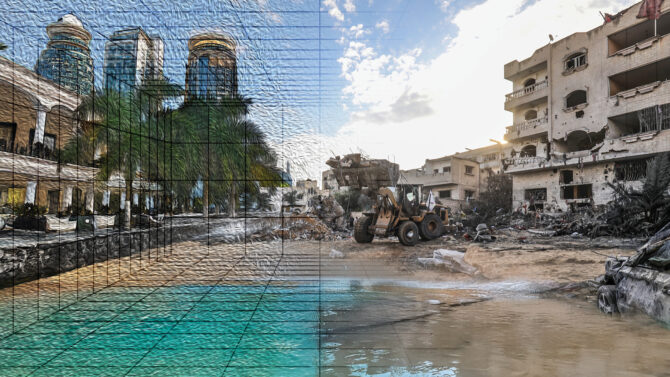Τhe moment that stood out at the Humanity Reloaded Festival, organized by Doctors Without Borders in Athens.
Featured image: Shutterstock/ImageBank4u
Monte Gaza and the New Silk Routes

Award-winning Middle East writer and multimedia journalist Iason Athanasiadis explores Donald Trump’s Gaza vision through the lens of 21st-century trade wars.
At the panel discussion “Gaza – Sudan: Voices from the Two Largest Armed Conflicts of the Decade”, held as part of the Humanity Reloaded Festival organized by Médecins Sans Frontières (Doctors Without Borders) in Athens (June 13–14), the speakers conveyed something far more harrowing than what reaches us through a screen. They spoke of a brutal, raw reality—almost incomprehensible to those of us watching from a distance: hospitals bombed, doctors and nurses working non-stop under constant threat, and thousands of civilians trapped, not knowing whether they will die from an airstrike or from starvation.
Nikolas Papachrysostomou, Head of Emergency Interventions for MSF, described the total collapse of the healthcare system in Gaza. “According to the WHO, there isn’t a single hospital in Gaza that is fully functional. For 80 days, we haven’t seen any medical equipment, supplies, or medication,” he said.
Giorgos Petropoulos, Senior Humanitarian Affairs Officer at the United Nations (OCHA), emphasized: “We’ve lost most of the hospitals, and also the schools that served as shelters. More than 500 humanitarian aid workers have been killed. Due to sanctions and the blockade imposed by Israel, no food or medical supplies are getting through. There isn’t even fuel for generators—no internet, no phone lines.”
I asked him whether Gaza could ever be inhabited again. I didn’t just mean the buildings. He gave a bittersweet smile and replied that Dresden was rebuilt by the Germans, and Hiroshima by the Japanese. Therefore, he said, Gaza can only be rebuilt by the Palestinians—on their own terms.

